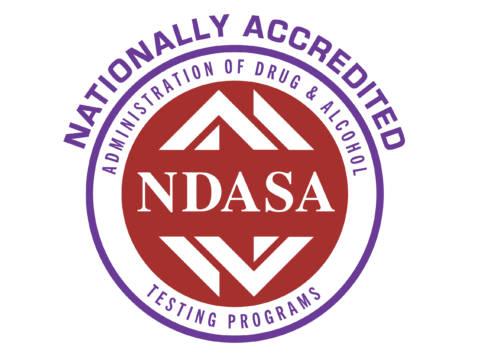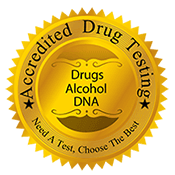What it is, How it works
Hair testing is now recognized as a robust method for identifying drug and alcohol consumption. Hair captures a comprehensive record of alcohol and other substances by storing biomarkers within the fibers of a developing hair shaft. When samples are taken near the scalp, hair can offer an approximate 3-month detection period for alcohol and other substances. Collecting hair is straightforward, challenging to tamper with, and easy to transport.
Acquiring a 1.5-inch sample of around 200 hair strands (about the thickness of a #2 pencil) nearest to the scalp equates to 100mg of hair, which is the ideal amount for evaluation and verification. For EtG, additional panels beyond 10, or add-on tests, it's advised to gather 150mg of the sample. We propose using a jeweler's scale to weigh the sample. If scalp hair is not obtainable, an equivalent quantity of body hair may be used as an alternative. When mentioning head hair, we strictly mean scalp hair, whereas body hair denotes all other hair types (facial, axillary, etc.).
Process Overview
The laboratory processing of a drug test result comprises four main steps: Accessioning, Screening, Extraction, and Confirmation.
Accessioning involves the beginner integration of a specimen into a lab’s system. This step encompasses validation that the sample was adequately sealed and transported, assigning a random LAN (Laboratory Accessioning Number), and finalizing any extra data input that an electronic chain of custody system did not provide.
Screening includes an initial brief screening for drugs of abuse. While Screening is an economical approach to eliminate drug consumption in the majority of samples, a positive screen necessitates confirmation for legal admissibility. Any samples with a presumed positive result in Screening must undergo a subsequent confirmation step.
In cases where a sample is presumed positive in the Screening phase, additional hair is extracted from the initial sample and prepped for Extraction. In this phase, substances are recovered from hair at a notably lower density than other methods (such as urine or oral fluid), making hair drug screening the most intricate method to execute.
Confirming any positive screening outcome is performed using GC/MS, GC/MS/MS, or LC/MS/MS. All samples presumed positive are washed beforehand when confirmation is needed. The entire laboratory procedure, from Accessioning to Confirmation, is audited under both the CAP (College of American Pathologists) Hair designation and the accreditation to ISO / IEC 17025 benchmarks.
Advantages of hair drug testing:
- Extended detection period: Hair drug tests can determine drug usage for up to 90 days, unlike urine tests which have a more limited detection period.
- Hard to manipulate: It is very hard to manipulate a hair drug test, rendering the outcomes more accurate.
- Offers historical insight: It can show a trend of drug consumption over a duration, not just recent usage.
Limitations:
- Inability to identify recent usage: It takes roughly 5-7 days for drugs to appear in hair.
- Expense: Hair drug tests are typically costlier than other drug testing techniques.
- Result variability: Elements like hair color and personal differences in hair growth can influence the level of drug metabolites in hair.
Note: Though frequently termed "hair follicle tests," the examination primarily assesses the hair strand and not the hair follicle beneath the scalp.
Why Hair Follicle Testing Beats Urine Testing
White Castle, LA benefits greatly from using hair follicle testing, which surpasses urine testing. With superior accuracy, hair tests provide reliable substance use insight. Opposed to urine tests, their elongated detection span offers unparalleled reliability.
Hair testing's accuracy is unrivaled, marking a stark contrast to traditional urine testing by offering detailed insight into long-term substance use habits, giving employers more confidence in test results.
Extended Detection Window
Hair follicle testing in White Castle, LA serves as a powerful tool, detecting drug use for up to 90 days. This long detection window grants employers a panoramic view of an individual's substance history, facilitating informed decision-making processes.
Employers in White Castle gain comprehensive insights into applicants' and employees' drug histories through extended detection windows. These insights foster trust in the reliability of substance use assessments.
Tamper-Resistant Testing Method
Hair follicle drug tests in White Castle, LA offer a tamper-resistant method of testing. This significantly diminishes the risk of sample adulteration, ensuring results that are both reliable and indisputable.
With hair testing's robust methodologies, concerns about sample tampering in White Castle are mitigated. Testing integrity is upheld, giving assurance of unfalsified and transparent results.
Convenient Nationwide Locations
White Castle, LA offers convenient access to a vast network of testing facilities. Our nationwide presence simplifies the testing process, ensuring swift, uncomplicated services at local centers.
The convenience of widespread testing centers streamlines procedures for residents in White Castle, providing hassle-free access to high-quality services without travel burdens.



